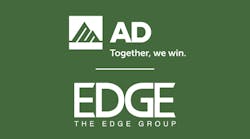Electrical distributors that dare to be different will rethink the value that they add to their services. The first part of this series on re-engineering value-added services covers the basic philosophy behind this thought-provoking approach.
It's not often that the officers of a business have a chance to wholly redefine what they manage. It's also rare to find officers who, once they realize they can redefine their business, have the courage and persistence to do so.
Electrical distributors sit at a juncture of a new definition of their business. Specifically, they are moving from a product-push definition of management to a service stance that adds value. Only the most courageous and insightful electrical distributors will make the grade on this transition.
This series of articles will help you make this transition as it attempts to answer heady questions of value-added services and develop a plan to measure, change, and charge for the value provided.
Industry maturation and product decline. There's no consensus on when wholesaling as an industry began. It's generally believed that sometime during the industrial revolution, manufacturers needed a way to get parts and pieces to market-distributors fit the bill. In the beginning, the value added was primarily a place function-somewhere to store material and make it easily accessible to the customer. As the industry grew and technology became more complex, the value added became more dependent on the breadth and width of the product offering and the product knowledge to support numerous applications. Most wholesaling industries, including plumbing, electrical, HVAC, and PVF, started in the late 19th or early 20th century, grew rapidly from the 1930s to the 1970s, and entered a mature phase in the last 15 to 20 years.
The value-added functions that distributors provided moved from a place-utility at inception to a product-expansion/product-knowledge utility during the growth stage. We are at a curious industry stage, however, since most of the aforementioned industries are mature with stable but slow growth. This juncture leads us to a basic question: "What value do we add now that our products are mature?" Depending on how we answer that question, we will take one of two very different paths of growth.
Many wholesalers will argue that their value added is what it has always been, including place, knowledge, breaking bulk and extending credit. Unfortunately, they miss the point in targeting the primary value that wholesaling adds, given the life cycle stage of their served industries.
Many (probably most) wholesalers are managing based on a value-added premise of product knowledge/product offering, but their industry life cycles have passed this stage of development. Today, a wholesaler's value is grounded in the services it provides. However, the problem with this view is that many wholesalers don't believe it, and if they do, they're not sure what to do about it. Let's tackle the "belief" question first and reserve the "what to do about it" for the other articles in the series.
What are we really selling? If you ask the average wholesaler what they are selling, you will get a quizzical look and they will probably say, "It's in our name." Hence, electrical wholesalers sell electrical supplies, plumbing wholesalers sell plumbing supplies, etc. If you mention, however, that the vast majority of the products sold (80% to 90%) are commodities and are differentiated primarily by price, that leaves you with two strategic growth paths: You can take the cost out of the business and compete on price, or you can change your value proposition away from price to something else.
We often get arguments on the product/commodity stance, but this typically disappears if you realize:
*Most product groups are dominated by less than a handful of manufacturers with similar product quality, function and service.
*Most wholesalers easily change from one vendor to another based on the price of the product.
The product prices move up and down based on the commodity prices of their raw materials.
Of course, there are some products that are worthy of a "product push" effort, including technical products, new products or existing products in new segments. By and large, however, electrical distributors' products are commodities, and it's very difficult to differentiate conduit, cable ties, switch plates and outlet boxes.
If you agree with this logic, then the challenge is to redefine your value added commensurate with its life-cycle stage, which, in my view, is as a learning service organization. Specifically, it's increasingly difficult to define a commodity business by its products and high time to realize we're not selling products as much as we are manufacturing and selling services.
The learning service organization. The concept of the learning service organization is that of a firm that actively engages the measurement, process documentation, troubleshooting, process correction and development of new services by market segment. The concept is straightforward and, from a timing perspective, makes sense.
Unless you've been living under a rock, you will realize that the U.S. Gross Domestic Product (GDP) is now based primarily on a service economy. Services appeared in the middle part of the last century and for the past 25 years have increasingly dominated the economy. These services are becoming more complex and better paying. Where service organizations began with the more simple establishments (hamburger flipping), they now cover complex industries including financial and engineering consulting firms. The average service wage, which lagged the manufacturing wage two decades ago, is now basically even with that of the factory worker.
Today's wholesaler is somewhere between hamburger flipper and high-tech consultant. Most of our services are the basic (expected) ones we have provided over the years (place, credit, storage, break bulk, delivery, product knowledge, etc.). Given the thrust of the service economy and increasing product commoditization, the time for engaging the service side of our business is right.
Another reason exists to immerse our managerial efforts in services, namely e-commerce. It seems that "dot-com" and "e-commerce" are magic words that can turn the poorest performing of companies around. This is what the popular press and dot-com groupies would have us believe. However, there's a particularly disturbing side effect of e-commerce for industrial distributors. If e-commerce for contractor and MRO customers dominates the future of sales transactions, and we think it eventually will, then our need to differentiate service becomes paramount. Why? Customers and potential customers will have an unprecedented array of Web sites from which to shop price. Of course they will assume, more or less, that the services that wholesalers provide are essentially the same and the lowest e-commerce price will win. In short, e-commerce will allow the customer to shop product price more than ever. If your services are undifferentiated, you will be forced into competing on price. Again, the path out of the price/e-commerce quandary is differentiation of service. Services are called experience products since they have to be experienced several times before the buyer can judge their value. Some services go well beyond the expected needs of customers, and these can be priced and positioned as unique offerings, which brings us to the thrust of our series.
Service classification and the concept of fee-based service. For several years, we have used the classification tool called the Service Hierarchy to illustrate the three basic classes of services. The Service Hierarchy (page 50) divides services into three categories: basic or expected, augmented and potential.
Expected or basic services are those that you perform on a daily basis. In essence, they are expected by the customer. The strategic thrust in expected services is to document the process flows and take out the cost. The work in expected services is to do more with less while maintaining or enhancing quality of output. The key to running a low cost distributorship is captured in process management of expected services.
Augmented services are expected services with enhanced options. For instance, engineering support is an inside sales function enhanced by a technically educated engineer. The augmented service is so named because it's literally augmented by new technology, new knowledge, etc. Your competition may have some augmented services and, in general, they have been around for a year or more. The strategic thrust for augmented services is the need to unbundle them from your regular offerings. We often find that wholesalers are performing augmented services for a group of customers and only need to unbundle and fully develop them.
Potential services are those that are the most difficult to create and perpetuate. They are the cutting edge service offerings and often involve the highest use of technology, knowledge or superstars of your firm. Potential services are the most costly for you and the customer. They are the most individualized services for sub-segments or single customers. They get their name because they are new in their life cycle and have potential to grow. The strategic thrust in potential services is the need to generate ideas for upcoming offerings and to pilot test new services.
On the far left of the service hierarchy, the two arrows indicate two important concepts. First, the chance for differentiation rises as you move away from expected to augmented and potential services. In other words, if you want to move away from a commodity product push, you should move up the hierarchy. Secondly, as you move down the hierarchy, the competition increases and the need to remove cost and streamline operations becomes a necessary part of the organization.
The service hierarchy is a good way to diagram service offerings and help the beginner conceptualize the difference among services. In the next installment, we will review how to measure, document and streamline expected services.








